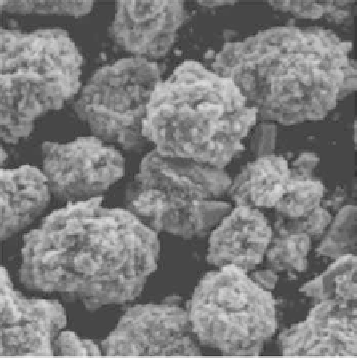Biomedical Engineering Reference
In-Depth Information
FIGURE 12.7
Fe
3
O
4
/alginate particles with a sphericity of 0.87. (From Bohm and
Pittermann 2000.)
usually prepared by deposition of a polymer/epoxy resin/alginate layer on the
magnetic core, and subsequent application of some kind of chemical reagent
or thermal technique that modifies the surface of the beads for it to be fully
functionalized, according to our specific goals.
12.5.2 Applications
In the last couple of years, the number of applications of MSFBs in biotech-
nology and biomedicine has had a steep increase. In fact, until very recently
the most known applications of MSFBs in these areas were all directed toward
bioreactions (by the use of immobilized enzymes and magnetic ion-exchange
systems for protein purification), analytical procedures (such as chromato-
graphic methods) and protein adsorption.
In this chapter, we will review these well-established processes and also
point out some recently developed important applications.
12.5.2.1
Enzyme or Cell Immobilization/Bioreactions
Biocatalysis uses enzymes or cells to catalyze a remarkable spectrum of reac-
tions. However, enzymes usually present a problem of solubility, and so, the
recovering process at the end of the reaction step is always dicult. There-
fore, enzyme immobilization is very often the best solution to avoid enzymes
to dissolve in the euent stream, and thus prevent product contamination,
poor stability, and limited reuse (Webb et al. 1996; Betancor and Luckarift
2008). However, many of the methods used for enzyme immobilization are not
suitable as they lead to reduction of its activity by causing structural damages
(Betancor and Luckarift 2008).


Search WWH ::

Custom Search